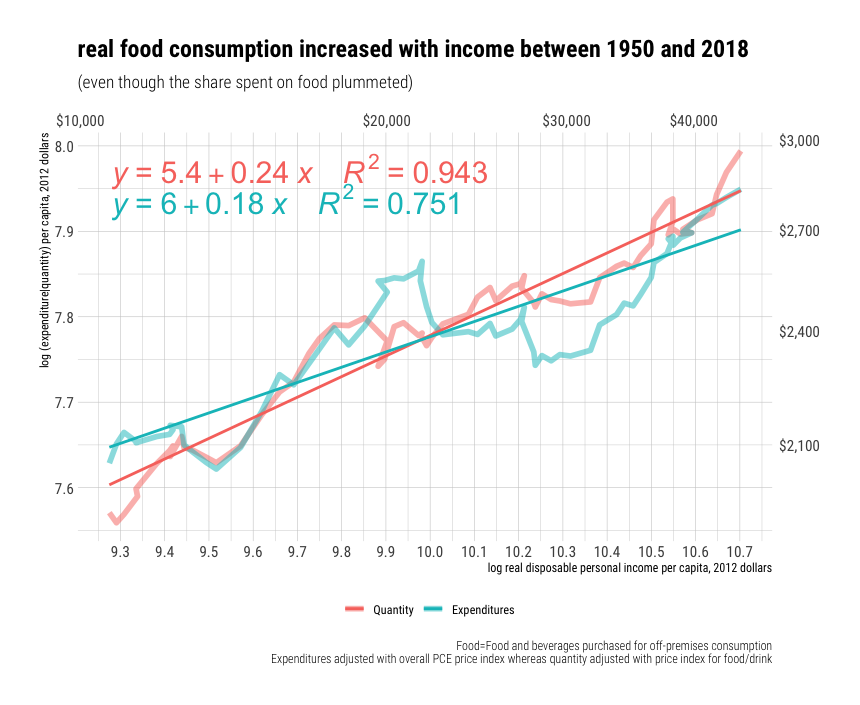Alex Tabarrok of Marginal Revolution linked to my primer and other research on health care recently. This brought a lot of extra attention to my work. Most of the response was positive, I think, but several people angrily lambasted my analysis. The adverse reactions generally amounted to little more than name-calling, and much low-quality material was amplified by the usual suspects.

I will not respond to name-calling. I will, however, reply to the few seemingly substantive critiques for the benefit of those that have trouble recognizing how weak these arguments are. I will also use this opportunity to drive home the point that health spending growth has clearly been increasingly non-linearly as a function of income, with the slope increasing, increasingly, in global cross-section and OECD panel data analysis. Indeed, I will show that the constant rate of relative increase implied by log-log regression specification, which triggered certain people, tends to underestimate the slope at higher income levels significantly.








